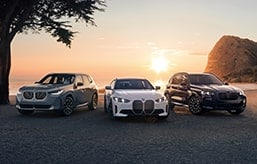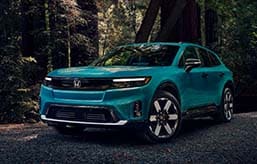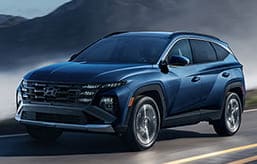How is miles per charging hour calculated?
The calculation for miles per charging hour is carried out by dividing the average charging power (in kilowatts) by the Edmunds tested consumption figure (kilowatt-hours used for every hundred miles traveled, or kWh/100 miles) and then multiplying the result by 100 to arrive at our mi/hr units. Again it is a measure used to gauge the charging efficiency of electric vehicles, providing insights on how many miles an EV can potentially cover per hour of charging.
What is the Edmunds EV Range Test?
The Edmunds EV Range Test is a real-world EV charging test. It is an apples-to-apples test that makes it easy to compare how quickly different electric vehicles can charge and gain range while connected to a fast-charging station.
What is Edmunds tested consumption?
After we complete the Edmunds EV Range Test on a vehicle and arrive back at our offices with the battery nearly empty, it's charged back to full capacity. The kilowatt-hours used from plug-in to a full charge are tracked. Then, we calculate the consumption based on the miles traveled. This process takes into account any charging losses in the Edmunds tested consumption number.
What is peak charging power?
Peak electric vehicle charging power refers to the maximum rate at which an electric vehicle can accept charge from a charging station. For our purposes here, we are referring specifically to DC fast-charging peak power and not Level 2 AC charging. Charging power is expressed in kilowatts (kW) and is determined by the capabilities of the vehicle's battery management system and the external charging station. The higher the peak charging power, the faster an EV can potentially recharge its battery, improving its convenience and practicality for longer trips or quick top-ups.
So is a high peak charging power always better?
Sort of. It's important to note that peak power values say nothing about how long vehicles sustain those levels. Some vehicles hit their peaks briefly and then drop off at a pretty steady rate, while others are able to maintain a higher power level over a longer period. Peak power rates are also usually realized when an EV's battery is significantly depleted and a vehicle's battery system has been primed to accept power at a high rate.
How do Edmunds and P3 measure peak charging power?
Edmunds and P3 measure peak charging power within the charging window of a vehicle beginning at 10% state of charge up to 80% state of charge. Peak is simply the max value we see at any point during this process.
How do Edmunds and P3 measure average charging power?
Similar to measuring peak charging power, Edmunds and P3 measure average charging power within the charging window of a vehicle beginning at 10% state of charge up to 80% state of charge. The difference here is we look at power from start to finish of the session and take the average value of everything.
Why do Edmunds and P3 test average charging power from 10% to 80%?
Beginning at a low 10% battery charge allows a vehicle's battery pack enough capacity to accept a large flow of energy. By stopping at 80% state of charge, you spare a battery's overall lifespan and better maintain its long-term performance. Charging power for most, if not all, vehicles also significantly slows beyond 80%, so it's often best to unplug at that point and free up that charging station for the next person.
What are charging losses?
Charging losses in an electric vehicle refer to the energy that is lost during the charging process, which can be caused by a variety of factors such as heat generation, efficiency of the charging equipment, and the car's battery management system. An easy way to grasp this in non-EV terms is if you're at a gas station and you're using a leaky gas pump. As you pump fuel into your vehicle, some of it spills out from the pump and lands on the ground, never making it into your gas tank. Depending on how bad the leak is, it may take you a little longer to fill up, not to mention you're paying for all the fuel that isn't making it into your tank.
How does Edmunds measure charging losses?
Edmunds measures charging losses based on the amount of energy used to charge a vehicle from 10% to 80% and compares that figure to what would equal 70% (80% minus 10%) of the total net capacity (the usable battery capacity) of a vehicle. For example, if your battery has a total net capacity of 100 kWh, it should take only 71 kWh to charge it from 10% to 80% (there are 71 increments between 10 and 80). If we measure that it took 80 kWh to charge the battery from 10% to 80%, then charging losses would equal 11.3%.























.png)

































 by
by